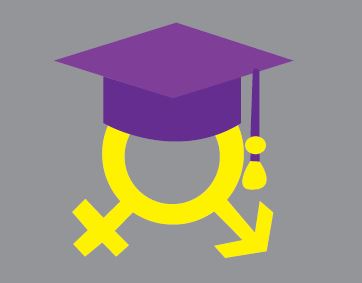American sex education failing, needs to change
December 19, 2020
It’s no secret that the American education system fails in many aspects to properly prepare students for the real world beyond understanding how to use the quadratic formula or that mitochondria are the powerhouses of cells. One of the most important areas it seems to fail lies in underfunded health curricula across the country, where a thick, uncomfortable tension lurks between the flimsy and few pages of lesson plans. What little sex education we as students may receive throughout our schooling is less than helpful, as it only perpetuates harmful stereotypes and furthers confusion.
As progressive as our society is now, we would hope sex education programs would be safe and inclusive spaces for any student, regardless of gender, sexuality, or beliefs. Unfortunately—much like the rest of the American school system—the values and ideas portrayed in these teachings feel a hundred years or more behind us.
In sex education, the inequality and discrepancies between the the teaching of boys and girls is evident in many ways. For female students, sex ed seems the equivalent of a tightrope walk, where the audience below never stops throwing rotten tomatoes of abstinence, birth control, and teen pregnancy. For male students, sex ed is better compared to playing the role of a ringmaster, proudly standing in the bright yellow spotlight, always in control of each act and performance.
Discussions of consent are also nearly nonexistent in these courses. This is easily one of the most important details in the realm of sex education, and yet, there are countless students and adults alike who will say it was almost never mentioned. It’s not just teaching us to recognize a “no” in all forms that is being excluded; it is also a failure to teach that consent can be taken away at any point in time, and those boundaries must be respected. Such a lack of knowledge contributes heavily to the prevalence of rape culture, which could easily and greatly be diminished if consent were given more importance in American sex education.
In addition, LGBTQ+ students might as well walk into a sex education class sporting wing-like ears, ivory tusks, and an obnoxious trunk for a nose. In the realm of sex education, LGBTQ+ students are the elephant in the room. Historically, LGBTQ+ people have been stereotyped as a group of hypersexual monsters, and the effects of that are evident in the blatant exclusion of sex ed for students who aren’t cisgender and heterosexual. They might get the birds and the bees talk, but there’s nothing about the birds who like birds and the bees who like bees.
The problems which result from the notion that sex or sexuality is taboo are evident, and will only grow with time if it continues this way. We are not learning all that we need to in our health classes, and we are made to feel as though having discussions and asking questions is wrong. We are forced to actively seek out information and answers that our schooling is not willing to provide. We are being taught to perpetuate toxic stereotypes and stigmas which directly contribute to the societal issues we are fighting so hard to change. It is time that this changes, before more schools allow their students to enter the world undereducated and ill-informed.
We need to recognize that sex education isn’t always about having sex; it’s also about taking care of our bodies and making sure we are safe. We need to encourage people to have conversations and ask questions, rather than maintaining the stigma. We need to discard the stereotypes and biases embedded in the curriculum and create a safe, inclusive space for all students—as it was intended to be. We live in a world where education is our only weapon against ignorance and evil, and our education system is failing to prepare us for battle.



